A few months ago, I started a new blog series called Details Matter. I see it as a chance to walk you through some of the intricacies of interior design work. This can involve everything from selecting the perfect paint color to choosing cabinet finishes to dabbling with layouts and lighting.
What you’ll come to realize as we move through this series is design work involves MUCH more than people realize. Take that last item — lighting — which we are going to delve into in today’s blog post.
Beyond just selecting the perfect fixtures, there is also a need to choose the right light bulb. And while this may sound like a simple task, it can actually be pretty complicated!
Most people are absolutely overwhelmed the first time they have to go bulb shopping as part of a renovation or new construction.
Because there are a LOT of factors to consider and look for, especially if you are trying to achieve a lighting plan that is not only functional but also visually appealing.
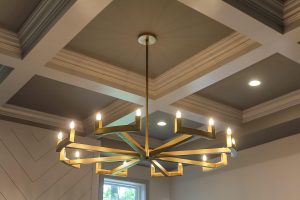 And if you are tempted to just leave this task to your electrician or contractor, you may want to reconsider. The bulbs you choose actually can have a big impact on the overall aesthetic of your room or house.
And if you are tempted to just leave this task to your electrician or contractor, you may want to reconsider. The bulbs you choose actually can have a big impact on the overall aesthetic of your room or house.
It’s proof, once again, that it can help greatly to have a design professional by your side as you walk through some of these choices.
As a designer, I’ve already made my mistakes and learned from them, and I’ve seen how certain lighting decisions play out over time. I can share that knowledge with you to avoid a lot of hair pulling and consternation!
When you read all of the details that follow, you’ll understand exactly what I mean.
Ready to dig in a little deeper? OK, here we go.
Types of Lighting
First, a quick primer on the types of lighting that I typically work with as an interior designer. As a rule of thumb, I usually try to have a mix of each of the following in every room. This ensures my bases are covered both functionally and aesthetically.
General or ambient lighting: On a broader level, I want the room to be well lit when 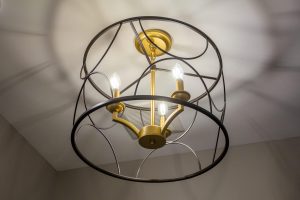 the sun goes down or the curtains are closed. This lighting that illuminates the whole room is called general or ambient lighting. Think chandeliers, pendant lights, track lighting or wall sconces.
the sun goes down or the curtains are closed. This lighting that illuminates the whole room is called general or ambient lighting. Think chandeliers, pendant lights, track lighting or wall sconces.
Task lighting: It is also important to have smaller and more focused sources of light for specific purposes, such as reading or working or cooking. This is called task lighting. Typically, desk or table lamps and under-cabinet kitchen lights serve this purpose, although sometimes pendants and track lighting also fall into this role. Task lighting tends to be brighter than general or ambient lighting, for both contrast and functional purposes.
Accent lighting: From a design perspective, it’s also important to highlight certain elements of the room, say, a work of art or a bookcase. This can create dramatic effect and visual interest. Wall lights and landscape lights are common accent lights.
Now, the mix of ambient, task and accent lighting will vary based on the type of room in question. But typically, I like to first establish the ambient lighting then move to the more specific accent and task lighting as the room design progresses.
For example, if I am designing a kitchen, I might first consider some well placed can lights and a chandelier for the kitchen table. Once I see how that looks, I will add some task lighting in certain kitchen work areas (over the stove, for example, or above the kitchen island). Then I might use accent lighting to highlight some shelving areas and wall decor.
Buying Bulbs
When a general lighting scheme is in place, I begin to wrestle with the more practical concerns of finding the right bulbs for each fixture. This is where a lighting schedule can really come in handy, because there are a lot of factors to consider when picking bulbs. And that means there is a lot to remember and keep track of once you have made those selections. 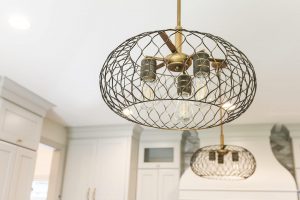
A lighting schedule basically goes room by room and lists every single fixture and the bulbs that will go with it. This helps organize selections and ensures there is no confusion as the plan is handed from designer to contractor to subcontractor.
For the purposes of this blog post, I’ll go through each of the subcategories that might appear on that lighting schedule.
Brightness
Back in the day, bulbs were defined in terms of watts, which refers to the amount of energy they use. Today, however, you are much more likely to see bulbs measured by lumens. This refers to the brightness of the bulb, which is a much more practical form of measurement.
In the simplest terms, you want to make sure you have enough lumens to properly light the room. And if you still live and think in the age of wattage, not to worry — because so many people still have wattage drilled into their brains, a lot of bulb packages will have wattage to lumens conversion chart so that you can more easily find exactly what you need.
HouseLogic has also put together some detailed information on lumens and what you will need based on the lighting task and/or room in question. 
Here’s a general summary of their research:
Kitchens: 5,000-10,000 total lumens
Bathrooms: 4,000-8,000 total lumens
Bedrooms: 2,000-4,000 total lumens
Living rooms: 1,500-3,000 lumens
Dining rooms: 3,000-6,000 lumens
Home offices: 3,000-6,000 lumens
Ambience or Color
Beyond brightness, it’s important to consider the overall tone or color of the lighting. The options can range from a warmer, yellowish hue to a more crisp white or bluish tint. Personally, I don’t think there’s one right answer here. A lot of it comes down to personal preference and also the design and use of the room. But it is an important factor to consider, and the way this is measured is through kelvins. Here’s a cheat sheet from Techlicious.com that makes navigating kelvins easy.
 2700 – 2800K: Warm, yellow light
2700 – 2800K: Warm, yellow light
3000 – 3200K: Still slightly yellow, warm light
3500 – 4000K: A neutral, bright white light
5000 – 6500K: A slightly bluish, bright white light.
By the way, it used to be that you could only get LEDs and CFLs in cooler, more harsh tones. But as more and more people are striving for energy efficient lighting, these bulbs have come along way, and they are now offered in a range of color options.
Bulb Type
Speaking of LEDs…Yes, you want them. While you do have a number of bulb types to choose from, including old-fashioned incandescent and CFLs, which are more energy efficient but not as attractive, there’s just no good reason NOT to go with the LED. An LED lasts for years and is up to 80 percent more efficient than a CFL. And this workhorse of a bulb now comes in a range of styles and colors, for a fairly affordable price. No brainer.
Other Factors
So, by now we are about halfway through the checklist of different factors to consider when choosing a bulb. I’m not joking! Bulb buying is intense.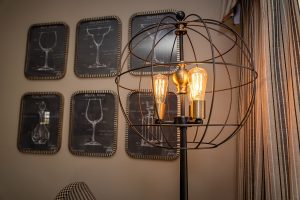
When selecting lighting for a home, I will also put some thought into the shape of the bulb. Why? Well, the look of a chandelier or pendant light can shift pretty significantly just by going from a candle-shaped to a globe-shaped bulb, or to a GLS (that traditional bulb shape we tend to think of).
Right now, for instance, Edison bulbs are very popular. These bulbs are made to look like the first light bulbs introduced by Thomas Edison over 100 years ago, so they can lend a nice vintage vibe to a room.
Bulbs also come in either clear or pearl (a hazy white). I tend to recommend pearl for table lamps or closed, opaque fixtures and clear for everything else. Right now, it’s just much more attractive and fashionable to showcase the filament inside the bulb.
Additionally, it’s important to check the bulb fitting to make sure it matches the fixture in question (E27 and B22 are most common, but there are smaller fittings out there).
And finally, there’s a question of function. Is the light fixture on a dimmer switch? If yes, it’ll require a special, dimmable bulb to work correctly.
In Conclusion
Head spinning yet? I know, it’s a lot. But the good news is selecting lighting and bulbs gets easier the more you do it, just like most things. And I’ve been working on lighting plans for many years now so I’d be happy to help you through this process. I actually find it fun!
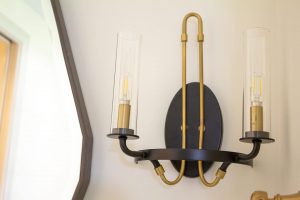 Hopefully, you are finding this Details Matter series helpful and inspiring. I look forward to taking you through more design specifics in future posts!
Hopefully, you are finding this Details Matter series helpful and inspiring. I look forward to taking you through more design specifics in future posts!
And in the meantime, feel free to reach out to me at any point if you have questions about this topic, or any other design dilemma.

